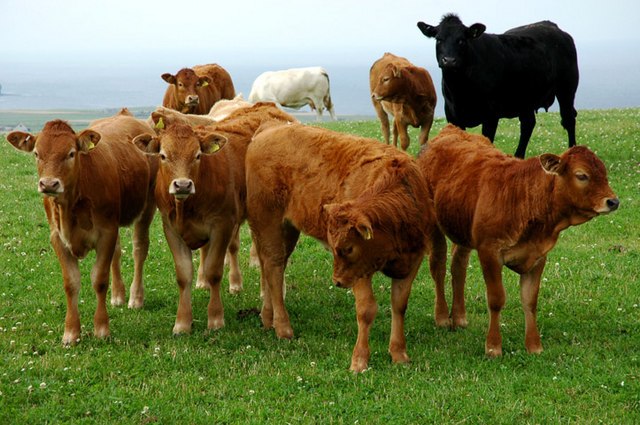At a time when prices of young cattle weighing 750 pounds are up stateside, ranchers are maximizing profits through value-added programs.
Stepping up the game are independent process verified providers helping farmers reap added value from their cattle.
One such provider is IMI Global, which Minneapolis-based DTN news on September 18, 2025 featured in connection with North Carolina farmer, Jamie Dail.
Dail gets at least ¢10 per pound over normal rates for every calf or steer sale on verified program video ware.
He finds that Q1 2025 sales through this independently certified process has brought “premiums of around $74 a head.”
The premiums change according to buyer, trade platform, region and weight range, but mostly oscillate in safe territory.
At Dail’s last trading platform of Mid-Atlantic Sales (MACS) in NC, the yearly premiums are ¢5 to 15 above normal rates. According to MACS’ management, the top premium came roughly five years ago at ¢25 a head.
Dail enrolls with IMI Global for non-hormonal and organic beef, two points that the U.S. Department of Agriculture (USDA) inspects.
What is Verified and Value-added Programs – are they Costly?
For a cattle farmer to maximize profits from live animal sales, they need to add value to them and register for verification.
Value-addition is the particular advantage of a calf such as its being grass-fed or having birth documentation, e.t.c.
The seller backs their choice value claim through an “owner-certified” affidavit, through an auditor.
To verify further, the USDA inspects the herd on such points as grass-fed, age, source and non-hormonal breeding.
The agency may also appoint independent process verifier programs (PVPs) that farmers can register with to expedite the paperwork.
Sometimes producers may also depend on private PVPs with no affiliation with the USDA but under legal license.
Third-party verifiers charge certain registration fees: the IMI, for instance, charges $10-12/head for every 200 cattle lot.
Some ranchers, however, escape with just owner affidavits in some private sales, but still reap the premiums. For example, of the 75% of cattle sales that MACS conducts, 50% either enjoys independent verification or just owner affidavits.
But do value-added programs escape when they range themselves against a reigning federal cattle market change? The statistics below attempt an answer by showing where PVPs succeed or fail like regular commodity herds.
United States Verified and Commodity Cattle Sales Statistics
Value-added programs for cattle sales differ from commodity ones because they sell non-GMO and age-verified livestock, among other points. This way they gain price advantage because their products are what consumers want. Ranchers earn between 5 and 25 US cents per pound over normal cattle in sales under verified programs.
Sometimes reigning factors crash gains and equate commodity and verified sales. For instance during COVID-19, verified program sellers could not find feed easily and so their underfed steers sold poorly. Feed is important because it is one of the verification points for grass-fed or organic certification. Between 2020 and 2025, feed costs in the U.S. rose by 2.3% annually, per the IBIS World. Their highest spikes were in the pandemic years 2020-22, as this interpretation of IBIS World’s data shows:
| Year | Feed index | Annual change |
| 2025 | 216 points | – |
| 2024 | 232.8 points | -19.3% |
| 2023 | 253.1 points | -1.9% |
| 2022 | 254 points | 30.9% |
| 2021 | 223.1 points | 30.3% |
| 2020 | 192.8 points | 4.3% |
What was the highest and lowest cattle price in the U.S in 2025?
In the January-September 2025 period, live cattle in the United States cost the highest on August 22 at $240.48 per pound (lb). They were lowest on January 1 at $191.59 per lb, according to the Trading Economics.
